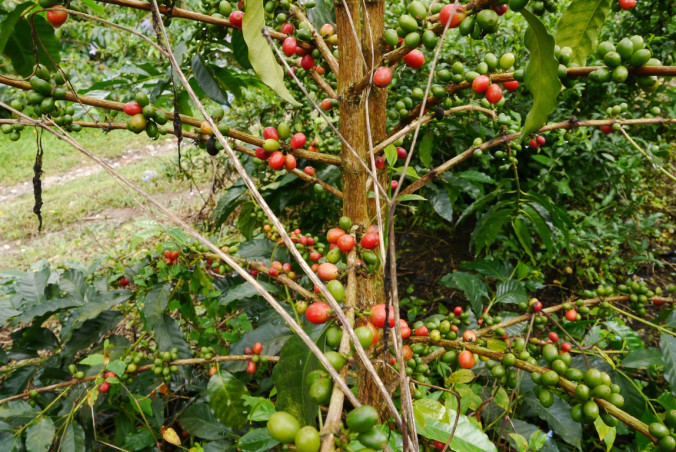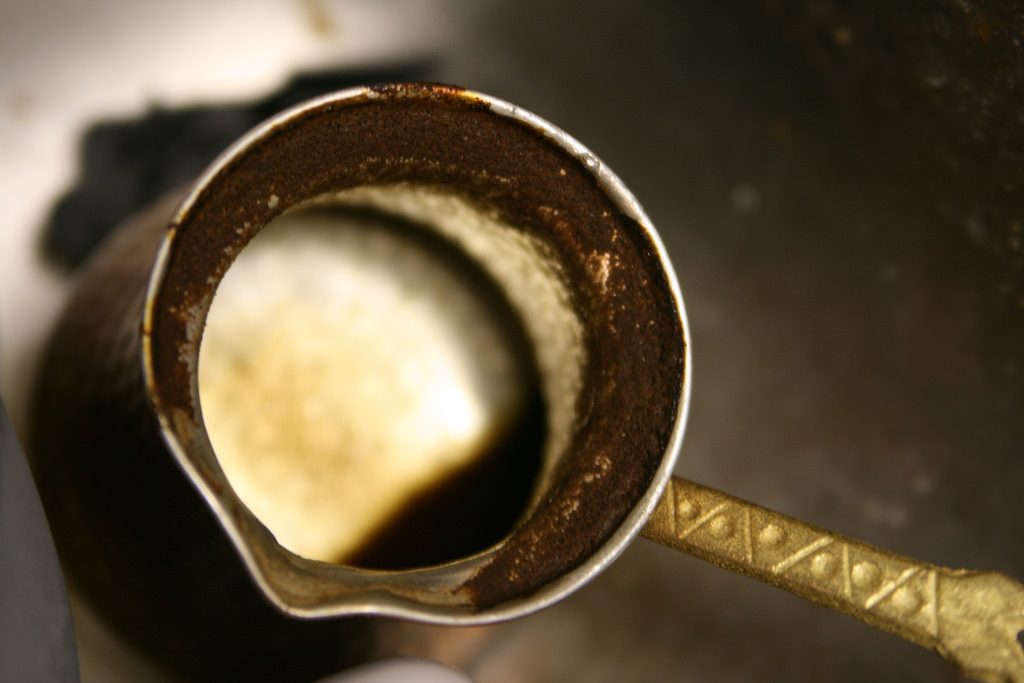Coffee rigid demand strong coffee farmers why are they still suffering?

Professional coffee knowledge exchange more coffee bean information please follow the coffee workshop (Wechat official account cafe_style)
The low price of ▲ coffee has left many African small farmers unable to sustain and switch to other crops, and the market is worried about the crisis of farming. (photo / Dazhi)
"A lot of coffee farms are uncultivated, and many people are far away," said Sonia V á squez, who grows organic coffee beans on the slopes of San Jose southwest of Honduras. "it's hard to make a living anymore. Vasquez, 46, has watched her coffee garden destroyed by a germ that has ravaged Latin America for the past six years, but now the collapse in global coffee prices has made her business more difficult to sustain. her income shrank by nearly 1 million last year, not even enough to break even.
For coffee farmers like Wausquis, who operate in the equatorial "coffee belt" between the Tropic of Cancer and the Tropic of Cancer, ─ consumers are supposed to have a good time, with more and more varieties of coffee, from handcuffs and vanilla lattes to cold extracts. However, many small coffee farmers from Ecuador, Ecuador, Papua New Guinea to Ethiopia are struggling to make ends meet. On the American International Exchange, the price of Arabica coffee beans, which accounts for 60% of the market, fell to a 14-year low of about 90 cents a pound.
Demand is increasing, but income is shrinking.
According to Euromonitor, the global output of coffee has almost doubled to US $90 billion in the past decade, and although global climate change has raised concerns that the long-term supply of coffee may be affected, the wholesale price of coffee beans has always been low due to factors such as higher-than-expected harvests, increased production efficiency and exchange rates. Coffee production in Brazil and Honduras hit record highs last year, and Colombian production reached its highest level in the 1990s, but demand did not keep pace with production and the market was oversupplied. Roberto V é lez, CEO of the National Association of Coffee Farmers of Colombia, said: "this has exceeded the extent of the economic crisis. Coffee farmers have left one after another, which is infinitely sad, but consumers do not know the truth. "
▲ has almost doubled the global output of coffee over the past decade, but the price of coffee beans has hit a low. (photo / photo by Chen Junsong)
Small coffee farmers in Guatemala and Honduras joined the ranks of progressive American immigrants, while farmers in Gueru and Colombia began to switch to cocaine. Although coffee beans are not in danger of being out of stock for the time being, buyers are beginning to be alarmed by the fact that they have run out of farmland, especially whether the supply of high-grade coffee beans can be sustained in the future. Matt McDonald, manager of coffee importer Caf é direct purchase in the UK, said: "if the current situation continues, it will be unthinkable in five years' time. It is a harmful cycle because farmers cannot afford fertilizer, the quality is declining, the harvest is declining, and it is getting worse year after year." "
Some multinational companies have made plans in advance to stabilize the supply of goods through actions such as technical support for farmers and cooperatives and coffee saplings. Last September, Starbucks also pledged $20 million to small coffee farmers in El Salvador, Guatemala, Mexico and Nicaragua. Nestl é, the world's largest coffee buyer, allocates US $67 million a year for technical support to coffee farmers, but admits that solving farmers' income problems cannot be handled by any individual company alone. The company is contacting the international coffee organization to try to solve the problem.
Coffee beans are probably divided into two varieties: Robusta and Arabica. The former is of poor quality, mostly used for instant coffee, or mixed into espressos to increase bitterness, while the latter has better taste and quality, and has different grades, high-grade Arabica beans are often treated at high altitude, and poor-grade producing areas are treated with low altitude and multi-sun treatment. Traders say the root of the price problem lies in the overproduction of low-grade Arabica coffee beans, which is a drag on the entire market.
Coffee beans are abundant, resulting in low futures prices of Arabica beans traded on the New York International Exchange in the United States. The sale of coffee beans is determined by the "New York C price" of the New York International Exchange, the premium sale of ─ high-end beans and the discount trading of poor grades. The current benchmark price means that even coffee farmers who sell at a premium cannot break even. Over the past three years, the average price of benchmark coffee in New York has been about $1.20 per pound, but the cost of production, processing and transportation of coffee beans has exceeded $1.50 per pound over the same period.
The abundance of coffee beans drags down the market price
In this case, some coffee farmers hope to find a new pricing method, and some buyers bypass the New York benchmark price and negotiate directly with coffee farmers or cooperatives according to production costs and profits. Velez says Colombian coffee farmers are eager to get rid of the shackles of the New York market, where prices do not reflect the true value of high-end coffee beans in Latin America. "Why should I be tied up by a market that doesn't work?" he pointed out. "however, opponents think that this is not necessary, because the situation has become even worse since the rise of computer program trading. Programmed trading, based on estimates of Brazilian production and expectations of the market's ups and downs, uses computers to execute transactions, exacerbating price fluctuations.
Like many agricultural products, the coffee market has its ups and downs, while coffee is not an one-year crop, and the cycle is even worse. The high price market promotes the improvement of planting and management, leading to an increase in production; when coffee trees are planted for four years and are first ripe, the annual production will put pressure on the price, while the low price will also lead to a decline in the quality and quantity of coffee beans.
In this environment, Brazil is the dominant market. It is the largest producer and exporter of coffee, accounting for 28 per cent of global coffee trade. Brazilian coffee farmers can also produce coffee beans at low cost, breaking even at less than 90 cents a pound. Many farmers are harvested by machines, and mass-produced Brazil can handle coffee beans in a simpler way than other Central American countries and Colombia.
Brazil produced as many as 62 million bags of 60kg coffee last year, and the weak Brazilian currency has made it more profitable for coffee farmers and exporters to export coffee. Although Brazilian production is expected to slow this year, it is likely to be overproduced next year. Carlos Mera, senior analyst at Rabobank, said: "production may be reduced in other producing areas, but not enough to offset the increase in Brazil. "
Speculators manipulate the market to increase volatility.
However, for low-cost farmers in Brazil, current prices have also hit their profits. At Minasul, a large Varginha cooperative south of Minas Gerais, which is exported to as many as 17 countries, its chairman, Jos é Marcos Magalh ã es, said that many of the 8000 members of the cooperative are small farmers and profits have been squeezed. "if this price range continues, there will be unemployment," he said. "
L ú cio de Ara ú jo D í as, head of the business division of Brazil's regional cooperative and Brazil's largest export cooperative, bluntly blamed speculators in financial markets for the price collapse. Over the past five or six years, speculators have looked at Brazilian production and waited. Since 2017, short positions have never been seen before, and coffee producers outside Brazil are constantly shorting when they are living beyond their means.
Since the opening of the New York Coffee Exchange (which has been admitted to the American International Exchange) in 1880, speculators have been accused of manipulating prices; in addition to physical coffee buyers and sellers using futures to lock in prices, players involved, such as hedge funds, also bet on the price of coffee up and down.
However, the degree of speculation that emerged last year has raised questions about the effectiveness of the market by investors who use benchmark prices to buy and sell futures pairs. Steve Pollard, an analyst at Marex Spectron Coffee in London, said: "speculators have a lot of short positions, but even if they try harder, they can't determine the overall direction of the market." "
Although the stories of small coffee farmers are often used to market individual coffee brands, consumers often do not know the bitterness of small coffee farmers and think that at least part of the profits they drink in the morning will return to the farmers. In fact, for a cup of coffee that costs £2.50, coffee itself accounts for only 4% of the price; store rent, labour and taxes account for a large part of the cost. Jeffery Young, chief consultant of Allegra Strategies, a consultancy, said: "Coffee costs are secondary to retailers. Even if the price of coffee beans falls by 30%, the price of each cup of coffee will rise because labor costs, rents and other items have all gone up." "
The profits of small farmers in cross-industry alliances are 3 times higher.
The "fair trade" that pays coffee farmers reasonable profits has always been the focus of efforts of bean bakers and traders who want to "decommercialize" coffee. Ken Lander, an American, quit his job as a lawyer and moved to Costa Rica to buy a coffee farm on the proceeds of selling American real estate; he was forced to sell coffee beans after the financial turmoil in 2008. He found that a batch of coffee beans he sold generated retail sales of about $30,000 in the US, while he himself received only $600.
So Rand, 52, began working with other farmers and an American entrepreneur to set up Thrive Farmers, which started a coffee import business in Atlanta, Georgia, in 2011. They bought coffee from 1000 farmers in five countries, established a "income-sharing model" and distributed 50-75 per cent of the proceeds from the sale of coffee beans to producers. "our farmers are at least three times more profitable than the second-best bid in the market," says Rand, who is now the head of Thrive Farmers's business division and grows his own coffee. "
Rand says that like his company, many coffee companies, large and small, have a set of ways to help farmers, but he acknowledges that there must be cross-industry structural measures to bring the dead back to life. "if we don't do this, the coffee industry will realize that coffee farmers can no longer grow coffee, there are almost no profits to speak of, or even negative profits, then we will have a problem, and not economists know this," he said. "
END
Important Notice :
前街咖啡 FrontStreet Coffee has moved to new addredd:
FrontStreet Coffee Address: 315,Donghua East Road,GuangZhou
Tel:020 38364473
- Prev

The Turkish coffee that runs through most of coffee history, you may have misunderstood it!
Professional coffee knowledge exchange More coffee bean information Please pay attention to coffee workshop (Weixin Official Accounts cafe_style) In this era of fine coffee, open most coffee reference books, as long as it comes to brewing props, nothing more than all kinds of hand-made pots, filter cups, siphon pots, mocha pots, etc., and finally we always put on the "Turkish pot," but often only a few words
- Next

Morgan Stanley first gave Luckin Coffee (LK.US) a "flat" rating, with a target price of $21
Professional coffee knowledge exchange more coffee bean information please follow the coffee workshop (Wechat official account cafe_style) Morgan Stanley first gave Luckin Coffee (LK.US) leveling rating, the target price of $21 Morgan Stanley published a research report that like Luckin Coffee (LK.US) unique store form, product pricing and rapid expansion of production capacity, but that Lucky's current valuation looks good
Related
- Being chased out of the rain in front of Starbucks?! Store: Sheltering from rain under umbrellas poses a safety hazard
- The white moonlight has changed?! Lucky launches "Big Winter Pear American"
- Hand-brewed coffee three-stage method, high-sweet and universal brewing method to share! What does the high sweet water level of hand-brewed coffee mean?
- What is the difference between raw, refined and full espresso coffee? How to extract espresso and taste good?
- A complete list of coffee bean names and their meanings! What is Yejia Shefi coffee? Where is Mantelin coffee?
- What grade does Arida Manor Kaduai coffee beans belong to? What treatment is Arida ASD slow anaerobic sun exposure?
- The milk tea cup becomes smaller?! Overlord Tea Girl launches a new "Return to Yunnan" series
- Accused of selling counterfeit and high-priced coffee beans! Well-known boutique coffee brand "Oukelao" bowed and apologized!
- How to make espresso dumplings? Can I eat coffee and glutinous rice balls together?
- Save the unformed and stagnant powder cakes in one second! What is the problem with stagnant water in the powder bowl of the espresso machine?

